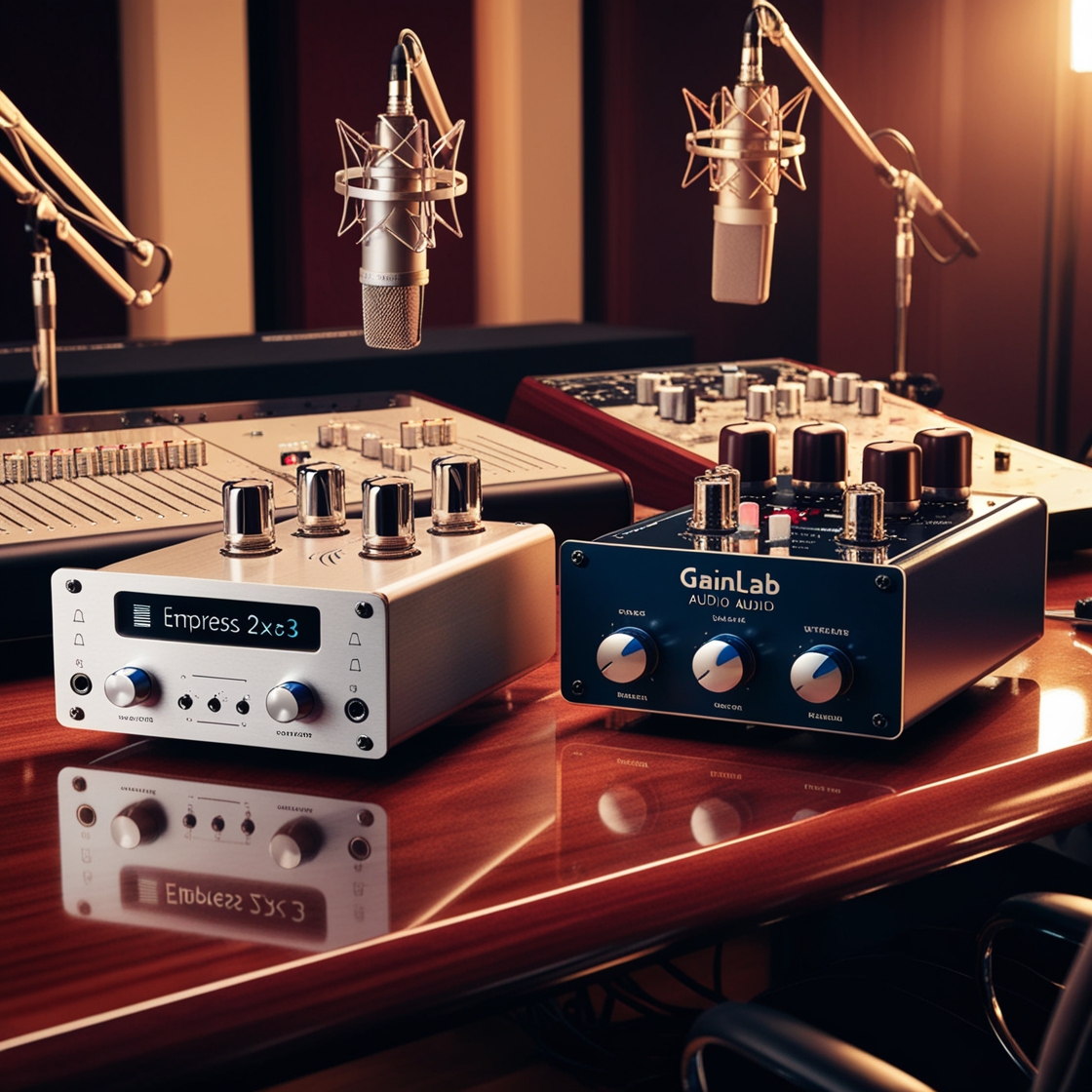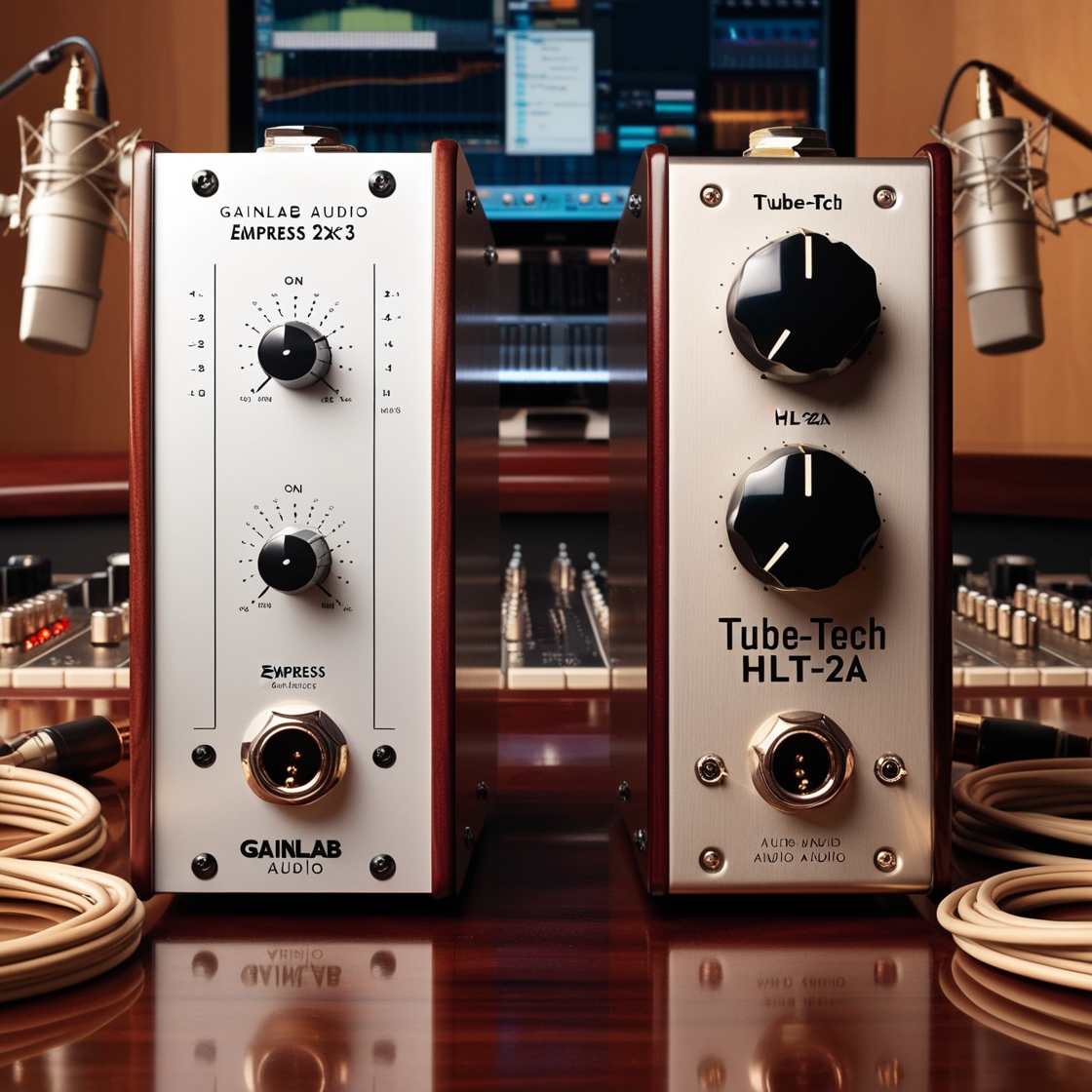- December 26, 2024
Gainlab Audio Empress 2×3 Versus Tube-Tech HLT-2A

Gainlab Audio Empress 2×3 Versus Tube-Tech HLT-2A
When it comes to premium audio gear, the Gainlab Audio Empress 2×3 and Tube-Tech HLT-2A are standout choices for professionals. These two units cater to different studio needs, and understanding their unique features can help you choose the right tool for your setup. This article compares them based on key aspects like type of equalization, tube circuitry, stereo imaging, frequency control, use cases, build quality, and value for money.
Type of Equalization
The Gainlab Audio Empress 2×3 offers mid-side equalization, allowing precise control over the stereo field. This feature is ideal for mastering engineers who need to fine-tune the spatial balance of a mix.
In contrast, the Tube-Tech HLT-2A focuses on tilt EQ and shelving filters. Its tilt EQ adjusts the tonal balance by shifting energy between the low and high frequencies, while the shelving filters allow smooth adjustments to the extremes of the frequency spectrum. This makes the HLT-2A a favorite for tonal shaping during tracking and mixing.
Tube Circuitry and Harmonics
Both units utilize tube circuitry to provide the warmth and harmonic richness that analog enthusiasts love.
- The Gainlab Audio Empress 2×3 delivers a transparent yet characterful sound, with subtle saturation that enhances clarity and depth.
- The Tube-Tech HLT-2A, on the other hand, emphasizes smooth, musical coloration, making it ideal for adding vintage charm to any track.
Stereo Imaging and Processing
The Gainlab Audio Empress 2×3 excels with its mid-side processing, which allows independent control over the center and side elements of a stereo signal. This capability is invaluable for mastering engineers aiming to widen a mix or tighten its mono compatibility.
The Tube-Tech HLT-2A operates in a standard stereo mode without mid-side functionality. It’s designed for straightforward equalization tasks, prioritizing tonal balance over spatial manipulation.
Frequency Control Features
The Gainlab Audio Empress 2×3 provides extensive control over low, mid, and high frequencies, making it a versatile tool for precise sound shaping. Its intuitive layout ensures quick and accurate adjustments.
The Tube-Tech HLT-2A simplifies the process with its tilt EQ and shelving controls. While less detailed than the Empress 2×3, the HLT-2A’s design promotes creativity by encouraging broader, more musical adjustments.
Target Use Cases (Mastering vs. Mixing)
- Gainlab Audio Empress 2×3: Best suited for mastering and advanced mixing tasks. Its mid-side capabilities and detailed EQ controls make it a go-to for professionals who need precise adjustments.
- Tube-Tech HLT-2A: Ideal for mixing and tracking. Its tilt EQ and vintage-inspired sound make it perfect for shaping the tonal balance of individual instruments or buses.
Build Quality and Design
Both units are built to last, with robust enclosures and high-quality components.
- Gainlab Audio Empress 2×3: Features a modern, sleek design with clear markings and intuitive controls. It’s crafted for users who demand precision.
- Tube-Tech HLT-2A: Offers a classic vintage aesthetic, staying true to Tube-Tech’s legacy. The controls are smooth and tactile, ensuring a satisfying user experience.
Price and Value Comparison
The Gainlab Audio Empress 2×3 is often priced slightly lower than the Tube-Tech HLT-2A, making it a cost-effective option for mastering engineers seeking advanced functionality.
The Tube-Tech HLT-2A commands a higher price but justifies it with its unique tonal qualities and unparalleled build quality. It’s a worthwhile investment for those who prioritize musicality and ease of use.
Conclusion
Choosing between the Gainlab Audio Empress 2×3 and the Tube-Tech HLT-2A depends on your studio needs:
- Pick the Gainlab Audio Empress 2×3 if you require mid-side processing, detailed frequency control, and versatile mastering capabilities.
- Opt for the Tube-Tech HLT-2A if you prefer straightforward tonal shaping, tilt EQ, and a rich vintage sound for mixing and tracking.
Both are exceptional tools, but understanding their strengths ensures you get the best value for your investment.